Mijnbouwstraat 120 is under construction. (Photo: Thijs van Reeuwijk)
A newspaper article on the sale of the historic ‘Mijnbouw’ building is raising questions within TU Delft. According to the Board, the article is based on wrong assumptions.
‘TU Delft sold a listed building to a company, losing millions. The deal was done behind closed doors’, was the headline of a long background article (in Dutch) in the NRC on Saturday 28 October.
The newspaper had access to ‘hundreds of internal documents’, spoke to people who were ‘directly involved’, and drew on these to sketch a picture of a Rector Magnificus and a Mayor that would do anything to sell the historic building at Mijnbouwstraat 120 to the Royal HaskoningDHV engineering company.
The NRC asserts that the building was sold below its market value, because of which TU Delft made a loss of millions of euros after ignoring negative internal advice, other potential buyers, and a risk of state support. In doing so, the Student Council, Works Council, and Supervisory Board were put on the spot at the very last minute. On top of this, the Science Centre and the Mineralogical Geological Museum lost their premises, against prior agreements that they could stay there.
‘Unique opportunity’
For a municipality that sees itself as a ‘city of innovation’, RoyalHaskoningDHV (RHDHV) is an attractive prospect. This became abundantly clear when the sale was made widely known in March 2020. In Delta, Bas Vollebregt, the then Alderman of Economics, Culture, Land Use and Real Estate, called it “a unique opportunity for the city” that such a renowned engineering firm had its sights set on Delft. “This may only happen once in 30 years.”
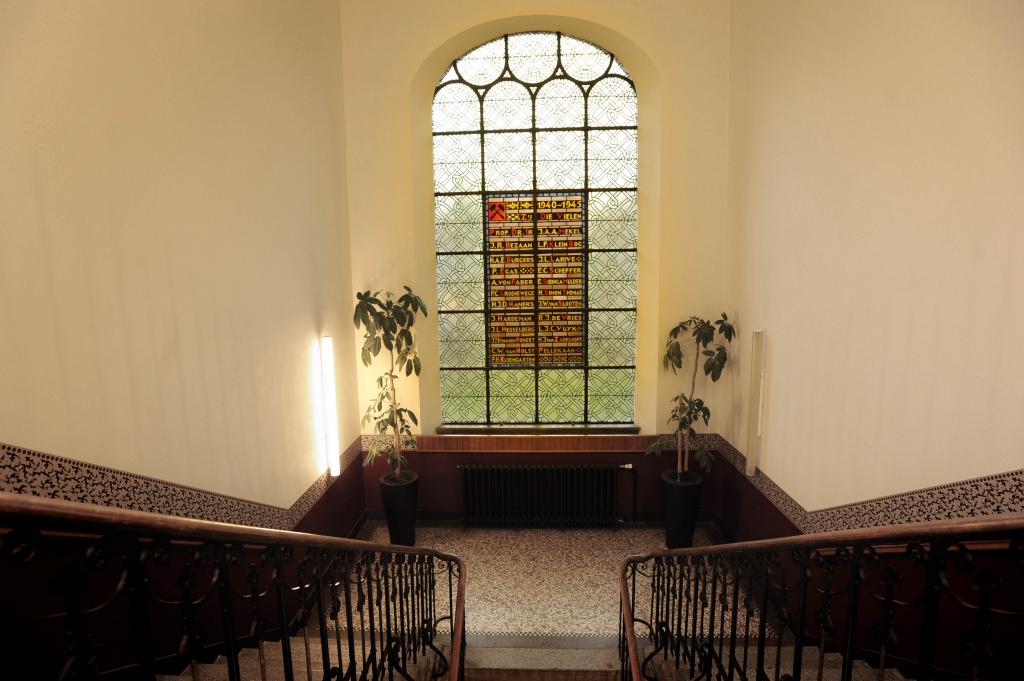
Rector Magnificus Tim van der Hagen viewed the arrival of Royal Haskoning as having direct advantages for TU Delft, he said in a written statement in the same article. ‘They are already involved in several research projects, various field labs (practical spaces where students, researchers, companies and knowledge institutions can develop, test and roll out solutions, Eds.), in the start-up incubator YES!Delft and in course content. The future physical proximity will ensure that we can further build on this intensive collaboration.’
Vollebregt told Delta that RoyalHaskoning had expressed an interest a year and a half earlier and had viewed various buildings, “but that the building on the Mijnbouwstraat emerged as the best option”. At the time, TU Delft did not announce the purchase price other than saying that it was ‘in line with the market’ and appropriate ‘for the location and quality of the building’.
In line with the market
The term ‘in line with the market’ has come under a magnifying glass because of the NRC article. According to the newspaper, the Mijnbouwstraat 120 building was valued at EUR 8.7 million in 2011. Internal TU Delft advisors had said that this is in line with the market. The building should not be sold for less, was NRC’s interpretation of the advice, as any risk to state support should be avoided.
On top of that, in the purchase, Royal Haskoning did not even want to commit to plans for a closer collaboration with TU Delft, writes the newspaper, even though internally that would have been ‘the justification for giving Haskoning priority in the sale of the building’.
In the end, according to the newspaper, TU Delft was paid ‘a little more than EUR 3 million’ for the building. On top of this, TU Delft also incurred ‘additional costs such as moving the occupants, maintenance costs up to the point of delivery, asbestos removal, and work on the foundations’ writes the NRC.
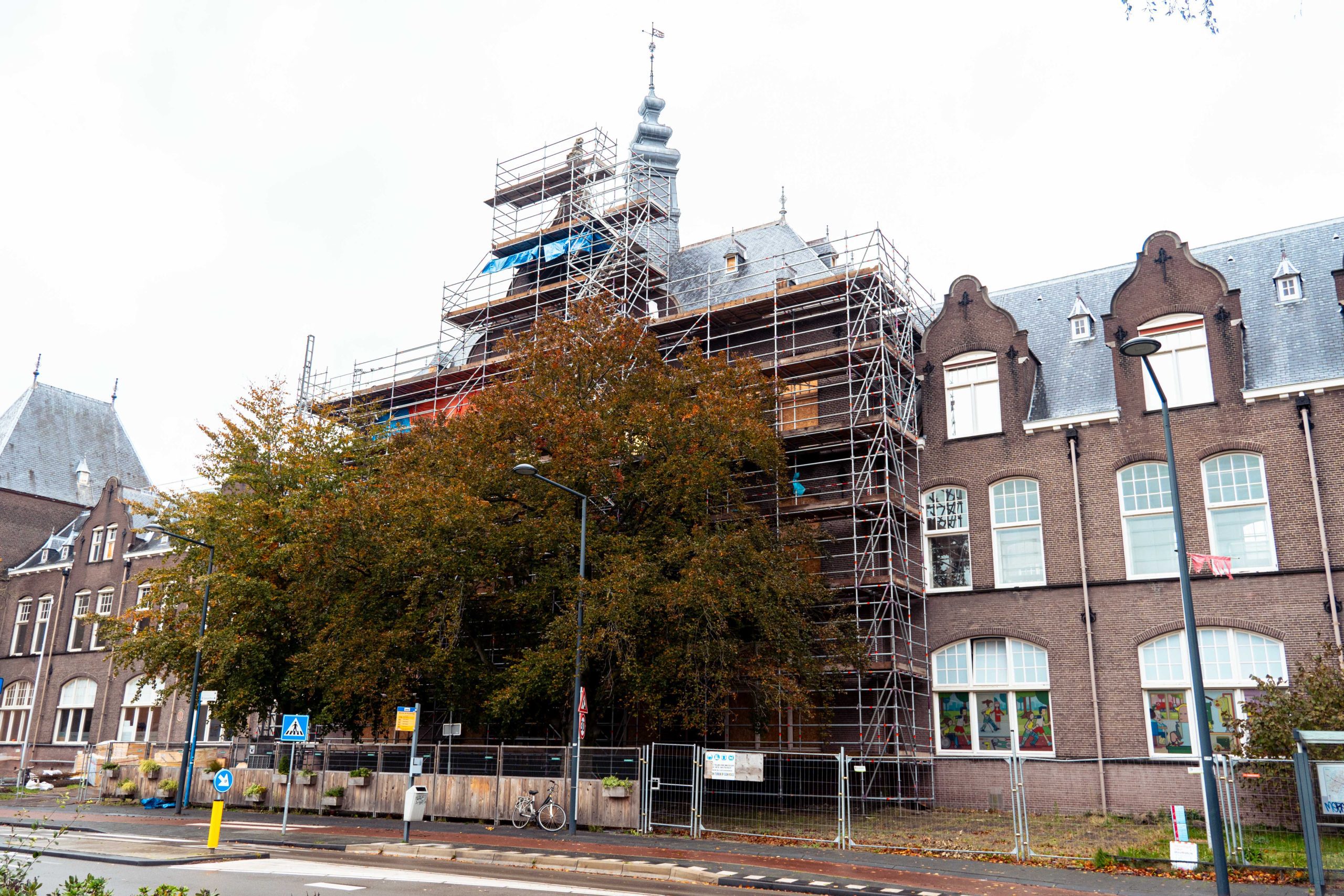
The NRC article is leading to questions within TU Delft, including from the Works Council and the Student Council. Both are intending to ask for clarification from the Executive Board at their next consultation meetings. Until then, they are both restraining from issuing opinions.
Works Council Chair Ronald Kuil can confirm what the NRC writes though, namely that both Councils were only asked for their advice a couple of days before the sale was made known, putting them ‘on the spot’. NRC quotes them as saying that they felt “very uncomfortable” and “no longer free” to share their advice. “After all, negative advice could damage the reputation of TU Delft.”
Costs and benefits
In the meantime, the Executive Board has drawn up a document answering questions for internal use. This was also given to Delta. In the document is both a statement that TU Delft has given to the NRC and six points from the article that it addresses. Several of these refer to ‘incorrect assumptions’ made by the NRC.
It starts with the article’s main conclusion that the Mijnbouw building was sold below its market value, leading to a loss of millions of euros for TU Delft. TU Delft reports that it had not taken the EUR 8.7 million market value into account. “Given legal accounting principles, the Ministry of Education, Culture and Science does not value TU Delft’s assets at their market value, but against the historic construction costs reduced in line with the accumulated amortisation (= carrying value).”
TU Delft informed Delta that the agreed sales prices was thus EUR 4 million, and another EUR 975,000 went on renovations and the removal of asbestos. In the end, RHDHV paid EUR 3,015,000 for the building.
Delta also requested TU Delft to list any other costs, such as for moving the Science Centre and the extra year’s worth of maintenance because of the later sale of Mijnbouwstraat 120. It did not receive the figures.
This means that Delta is not able to compare the revenues and expenses. TU Delft says that this would, in any case, be complicated. Through a spokesperson, the Campus and Real Estate Department let it be known that “costs and benefits are hard to compare. Costs are direct while benefits only transpire over time”.

Better decision
TU Delft also says that the NRC made another error in judgement in saying that during the process the Executive Board pressured the internal accountant into bending the negative advisory about possible state support. ‘During a decision-making process, it is not unusual that advice from accountants is adjusted’, it states, along with ‘By being critical and asking for additional information and substantiation, a better decision is ultimately taken’.
TU Delft also states that ‘the high costs of the building given its poor state’ were also considered in the decision-making process, just as information about what other potential buyers had offered for the Mijnbouw building
Three other potential buyers preceded RHDHV. They had signed up for a competitive tendering procedure to ‘create an incubator for robotic start-ups’ in the Mijnbouw building. NRC wrote that this procedure was stopped to allow Royal Haskoning to continue. It would have led to a year’s delay in the sale, which would have meant additional maintenance costs.
TU Delft says that this was not the case and can be proven by the timeline. “The procedure was stopped at the end of 2018. There was contact with the bidders about their offers. Discussions with RHDHV started at the beginning of 2019. In March 2019, while there was as yet no agreement with RHDHV, the procedure was stopped to provide clarity to the other bidders. TU Delft had clearly stated in the terms and conditions of the competitive tendering procedure that it had the right to end the procedure in the interim.”
According to TU Delft, none of the other interested parties have raised any objections. And despite their dissatisfaction about the speed at which they were asked to consent, the Student Council, Works Council and the Supervisory Board agreed and the accountant approved the 2020 annual account.
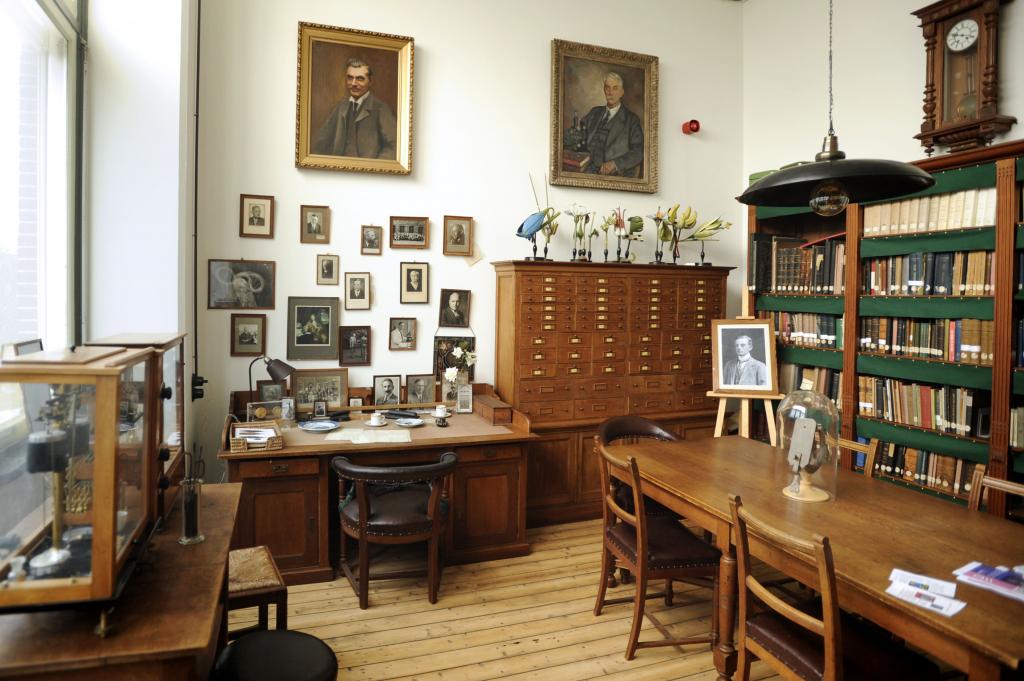
‘Not an everyday transaction’
Then there is the role of Rector Magnificus Tim van der Hagen who, according to the NRC, meddled ‘intensively’ with the deal and ‘had contact with Oostwegel (the top man at Haskoning) at crucial points in time, while another TU Delft Board Member officially carried out the negotiations’. Looking at the internal documents, the newspaper calls Van der Hagen ‘the driving force’.
TU Delft states that this is based on an incorrect assumption and ‘for questions about the progress of the sale’ Van der Hagen referred to the Board Member responsible, the then Vice President of Operations, and he himself ‘was not involved in the substantive preparations of the decision’. TU Delft points out that the decision to sell was ultimately taken ‘by the entire Executive Board’.
In its statement, TU Delft writes that the sale of the Mijnbouw building ‘was not an everyday transaction’ and was ‘therefore internally evaluated’. This should show that the sale was done according to ‘relevant procedures’. A TU Delft spokesperson does not want to speculate why confidential internal items then landed on the desk of a journalist. He only says that it is ‘unusual’.
Lessons
TU Delft also wrote to the NRC saying that it ‘has learned lessons’ from the evaluation of the Mijnbouw building sale. ‘It would have been more transparent for everyone involved if the steps in the sales process had been notarised in advance. The steps to be taken by potential stakeholders would then have been clearer.’

In a written response to Delta, TU Delft states a couple of other lessons: ‘such as recording a possible delay in the planning for the sale agreement; better noting of internal financial agreements; strictly separating tasks between the Board and executors; and, involving a notary public in sales processes’.
It will be years before those lessons come in handy. In the TU Delft campus strategy, one of the options is that after Mijnbouw, the nearby former main building, now the Faculty of Architecture and the Built Environment, will be sold too. However, there are no concrete plans as yet.
Role of the municipality
The NRC writes that the municipal council went to great lengths to attract RHDRV. It allegedly offered an incentive package to the company worth EUR 1 million.
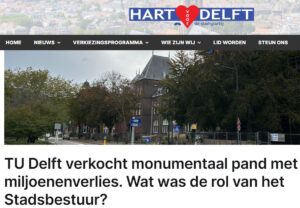
The Municipality informed the NRC that a EUR 300,000 discount was given on the rental of parking places and a EUR 100,000 discount on the municipal costs for the repurposing of the building.
Hart voor Delft (a Delft-based political party, Eds.) submitted questions in writing to the Mayor and Aldermen. The Party wants to know if the above assertions were correct and why the Municipal Council had not been informed.
Reflecting on the collections
In selling Mijnbouwstraat 120, the Science Centre and the Mineralogical Geological Museum have lost their accommodation. The managers are working on finding new premises.
Science Centre
The sale of the building to RoyalHaskoningDHV was announced on 2 March 2020. Michael van der Meer, the Director of the Science Centre, had been informed previously by Nicoly Vermeulen (the then Vice President Operations in the Executive Board).
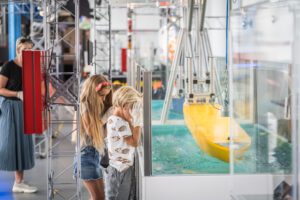
In contrast to what had been promised previously, the Science Centre and the Mineralogical Geological Museum (MGM) had to leave after the sale. “This was terrible,” Van der Meer remembers. “But we are in a hierarchy so if they say ‘we are giving it up’ then that is what happens.”
When Delta phones him three-and-a-half years later because of the NRC article, he is milder. “Change is not always bad. The advantage of moving is that a new environment also gives you new ideas.”
The Science Centre layout is still pending. The staff members have started arranging the office spaces, a maker space and teaching spaces. Now that these are ready they are working on the areas around them, such as the robo lab and the electronics lab. The planning is that the educational laboratories will be ready in November 2025.
After that, there will be a large exhibition in the Science Centre. Van der Meer wants it to be interactive and to link art and heritage in a way that reflects current themes. He also believes that the ores in the mineralogical collection will be useful, given the shortages of raw materials.
Mineralogisch Geologisch Museum
Duco Drenth, Chair of the Mineralogical Geological Museum (MGM) Foundation, still feels unfairly treated. In October 2018, Rector Tim van der Hagen had put his mind to rest saying that the MGM could stay after the Mijnbouw building was sold.
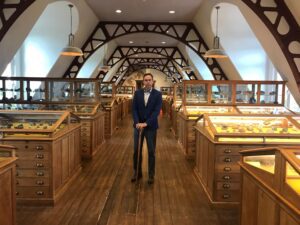
But on 2 March 2020, the day that the Executive Board made the sale to Royal Haskoning known, Drenth heard that the collection had to move and that the sponsor contracts would be dissolved. The collection moved back to Naturalis in Leiden, that had in fact managed the collection since the original exhibition of the MGM in 2013 was closed (in Dutch) on the initiative of the then Rector Karel Luyben.
Drenth is not someone to be easily pushed aside. He has set his sights on a mineralogical exhibition on the ground floor of the Faculty of Civil Engineering and Geosciences (CEG) building.
When asked, CEG Dean Jan Dirk Jansen responded in writing saying that the Faculty is looking into options to display at least part of the collection. This could be part of the renovation of the first floor hallway. Another place could be the so-called geoscience experience centre that will be created as part of a major renovation on the ground floor next to lecture hall A. ‘The timing though is still uncertain’, writes the Dean.
Delta previously published about the museums:
- Dendriet, witmakers en triceratops (2002, in Dutch)
- De schatkamer van Mother Earth (2007, in Dutch)
- Afvoeren, opknappen of allebei? (2013, in Dutch)
- Stenenmuseum maakt doorstart (2014, in Dutch)
- What’s hiding? The mineralogical and geological museum (2015)
- Beijerinck has just left the building (2017)
- Dinosaur skull rises from a 3D point cloud (2020)
- Oldest TU building is sold, Science Centre will move (2020)
Do you have a question or comment about this article?
s.m.bonger@tudelft.nl


Comments are closed.